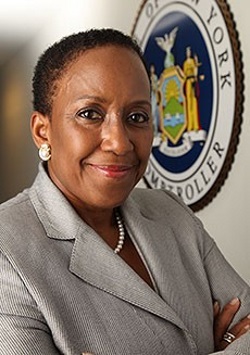Compensation and chief investment officers
by charles | Comments are closed11/04/2018
Who are the best-paid endowment CIOs?
Compensation is a delicate issue; but recruiters need to keep track of it. And, we see no reason why we shouldn’t share some of that bounty with our readers. (See our complete compensation chart just below.)
Most of it is publicly available, anyway; as long as you’re willing to scrounge for it. Private schools and some publics disclose it in IRS filings. The hitch is the long time-lag — more than two years — before the data is publicly available. The corresponding data for most public schools is often fresher, but it’s scattered among various and often quirky databases in various jurisdictions with various disclosure rules.
It’s ironic that data for public colleges has sometimes been the least public. But that’s changed somewhat in recent years as more states adopt sunshine laws for public-employee pay generally. Or, you can file a FOIA request. But it’s been like pulling teeth in many places.
And, even when public-school CIO comp is published, it can’t always be trusted. Clever college administrators have sometimes found (or constructed) loopholes in those sunshine laws which let them conceal part of the CIO pay-package.
A recent and noisy case in point arose in Michigan. The official University of Michigan salary-disclosure listing (page 447) for 2017 showed CIO Erik Lundberg’s total comp as $720,000.
We’ve been skeptical of that number for a while, but the U was eventually prodded into disclosing that Mr. Lundberg actually made $2 million in 2017.
Although the gross number had become public, the Detroit Free Press still sued the University to obtain details about how it was calculated.
The judge sided with the Freep, but the university argued that they had legitimate reasons for keeping them private.
“Despite the court’s ruling, we believe disclosure of the … Incentive Plan will put U-M at a competitive disadvantage,” a school spokesman said. “Because there are very few public universities in our endowment peer group, virtually no comparison [sic] schools will ever have to make their plans public. These are the employers against which the university competes for talent recruitment and retention.”
The fact that a major university would go to some trouble to avoid disclosing that information does speak to the highly competitive market for top CIOs. If you have a good one (and Mr. Lundberg is very good), there’s always anxiety that someone with deeper pockets will whisk him or her away. And, if you’re crafting a competitive offer, it certainly helps to know exactly what you have to beat.
As the Lundberg case confirmed, these pay packages are complex. In our chart below, we can only offer the bare numbers.
Read More »CA vs NY: Performance and pay at the Mega-pensions
by charles | Comments are closed07/31/2018
Vicki Fuller, chief investment officer at the country’s third-biggest public pension — New York State’s Common Retirement Fund – has announced her retirement by the end of this summer of 2018.
We just had a chance to chat with her about her life and times. But first, here are a couple of mini-charts to put everything in perspective.
As of September 2017, there were only three U.S. pensions with over $200 billion in assets – two in California, and one in New York. Here’s how Ms. Fuller’s fund stacks up against the Californians.
Read More »OCIO assets near $2 trillion after six-month 17.4% jump
by charles | Comments are closed06/20/2018
Eighty-one firms have updated their AUM and contact information for our latest Outsourced Chief Investment Officer (OCIO) list.
They include four new listings: Deutsche Bank with $15.5 billion, Ellwood Associates with $1.2 billion, LCG Associates with $0.382 billion, and Ballentine Partners with $6.6 billion in discretionary OCIO assets.
Our total reported OCIO assets have grown 17.4 percent in just six months. That’s double the year-over-year increase we measured over all of 2017. And, almost all of that is organic growth in firms we were already covering.
That’s what we call exponential growth!
Our OCIO coverage continues further below. It includes our updated list of all vendors and an analysis of industry growth.
Read More »Where do chief investment officers come from?
by charles | Comments are closed05/16/2018
Every year there are about 50 to 100 US nonprofit (tax-exempt) and family office CIO searches and that number will climb as more ultra-high-net-worth families (over $100 million AUM) form offices, create foundations, and hire professional investment talent.
PwC forecasts a near doubling in global AUM over nine years, from $84.9 trillion in 2016 to $145.4 trillion in 2025, and predicts the US share of this global wealth pie to rise from $46.9 trillion to approximately $71.2 trillion over the same period.
But where will families and institutions find these investment heads? Asset owners want to know where to find good candidates, portfolio managers want to know what their chances are of landing a CIO job, and marketers for external money managers want to know whom to call.
Some families and institutions will select the OCIO option (outsourced chief investment officer) and place their assets with an outside firm, but most will choose internal management.
As search consultants, we recruit and fill positions within three broad categories: nonprofit institutions, family offices, and the for-profit investment world of Wall Street investment banks, insurance companies, mutual fund managers, RIAs, hedge funds, and consulting firms.
All public pension systems, most endowments, and many foundations, health systems, associations, charities and corporate pension plans publish their fund returns and we use that information to rank and identify the top performing funds, chief investment officers, and senior asset managers. Find the best performing funds and you are likely to find the best talent.
Most nonprofit funds over $1bn and about one third between $500 million and $1bn have CIOs. In 2011, we counted about 1,300 CIOs and heads of investments at tax exempt institutions.
Today we track about 1,100 chief investment officers and another 800 up-and-comers in the nonprofit sector as the increase in endowments, foundations, and other nonprofits with a billion or more in AUM has been offset by a drop in the number of corporate DB plans.
Family offices: the best CIOs you’ve never heard of
Read More »
What does it cost to run an investment office?
by charles | Comments are closed04/01/2018
In early 2016 certain Congressional committees sent letters to 65 major private universities asking for information about their endowments.
It was worded as a polite request, but it came from people who could, for instance, compel the endowments to adopt a strict spending rate (like private foundations) instead of the more flexible regime they currently enjoy as “charities.” Needless to say, the schools all coughed up the information forthwith.
Apparently, this data-dump just went into filing cabinets, and neither the schools nor Congress have been eager to share those reports with the general public. But our clients (nonprofit boards and “Wall Street” asset managers) find this information useful, so we scrounged up copies of 15 of the responding letters from various sources. The other 50 schools have kept theirs out of sight.
We were especially curious to see what the schools had to say about endowment management costs, which has always been a cloudy issue for us.
Commonfund agrees. In a 2015 study they opined that:
…unlike other factors that affect investment returns, such as asset allocation and the many types of operational and investment risk, costs are almost certainly the least well understood.
See: Commonfund Institute: Understanding the cost of Investment Management (October 2005).
As we said in our OCIO report, the perceived cost of managing the endowment is a major factor in the decision to outsource, or not to.
It’s not the only factor, but a big one. But how can a board make that decision if they don’t know whether they’re spending more or less than their peers? And, whether outsourcing will actually save them any money?
Investment returns can be benchmarked to the second decimal place, but the costs of managing those investments are harder to come by.
So, we’ve done our own analysis of the cost data reported by those 15 schools. It has some limitations, but we seem to be the only ones to have ransacked these letters.
Read More »





